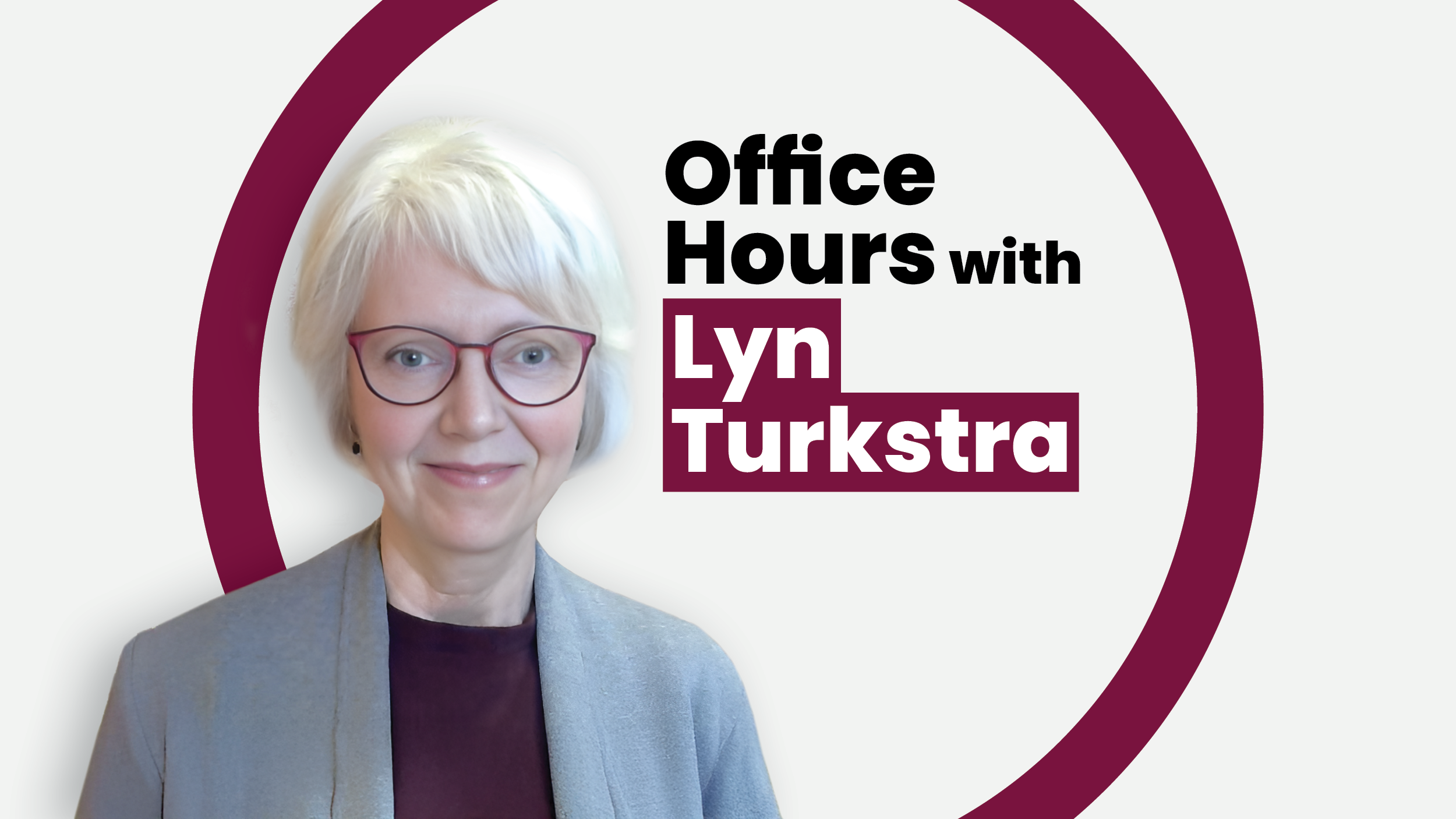Fly on the Wall: Redefining arthritis care in Canada

Arthritis impacts an estimated six million Canadians, making it one of the most prevalent long-term health conditions in the country. The associated symptoms, such as chronic pain, stiffness, and swelling, often lead to challenges with movement and significant impacts on a person’s quality of life. This discomfort and physical limitation can negatively affect mood, leading to frustration or depression.
Occupational therapists (OTs) and physiotherapists (PTs) play a crucial role in managing arthritis and are trained to empower individuals to actively participate in their recovery and maintain long-term health and well-being.
McMaster’s School of Rehabilitation Science is home to many talented OTs and PTs, two such individuals are Tara Packham, an occupational therapist and assistant professor of Rehabilitation Science, and Julie Herrington, an advanced practice physiotherapist and assistant clinical professor of Rehabilitation Science.
We met with them both to learn more about arthritis, the similarities and differences in how it presents in children and adults, and why they are champions of a conservative management approach.
What exactly is arthritis?
Packham: Let’s start with the word itself, ‘arthro-’ means joint and ‘-itis’ stands for inflammation. So, we are talking about inflammation that’s impacting a joint. Beyond that, there’s two big buckets of types of arthritis that we often talk about.
The first one is osteoarthritis, which is a failure of the body to be able to repair itself after injury or due to age-related changes. The second bucket is inflammatory arthritis, which includes things like rheumatoid arthritis, psoriatic arthritis, lupus, gout, and even juvenile arthritis.
Herrington: I often start off talks exactly with this conversation, and being clear that there are fundamentally two basic categories of arthritis. I typically work within the inflammatory side which is often considered an autoimmune condition. More specifically, I work with kids, so we call this juvenile idiopathic arthritis, or JIA.
Approximately one in seven adults have osteoarthritis. But when you are looking at kids that statistic is about three in a 1,000. So, it is much less common.
How does arthritis present in the patient populations you work with?
Herrington: In the juvenile context, for a family at home a lot of times they might notice that their child’s knee is swollen, but more often they would notice that the child wakes up limping. This often leads parents to rack their brains for when their child was injured, but the “injury” persists and does not get better. So, at some point, usually families end up in the emergency department, with a comment like, “I don’t know why my child still limping,” eventually they get sent to rheumatology for a diagnosis.
Packham: That’s a great jumping off point because I think in adults that most people either are reporting pain or stiffness or a combination of those two things together. Pain and stiffness usually impact what people do and how they move around. People should enter the healthcare system at the point when there’s something stopping them from doing the things that they need or want to do. And I think that’s exactly where occupational therapy and physical therapy have the biggest impact.
What similarities are there between your approaches to arthritis management?
Herrington: Many people need conservative management – which aims to control symptoms and preserve joint function or improve quality of life – and that is exactly what we do in OT and PT. So, it’s hard to almost define what I would do versus an OT because it is a constant blend. Yes, there’s exercise, but there’s also joint protection and learning to conserve energy at work or school.
Packham: My practice area is upper limb rehabilitation, where PTs and OTs often work together in a blended role. We would both be doing exercise and activity modifications, thinking about assistive devices, talking about fatigue management, sleep or pain management. Or even thinking about some of the effects of pain, like brain fog and how does that need to be managed in terms of daily activities and either returning to work or being able to continue to work.
How has your approach to arthritis care changed over your careers?
Packham: In the area of rheumatology and in upper limb rehabilitation, we used to see a lot more people that went on to have surgery. But now we have a class of medications we call biologics which are a huge game-changer. We saw this shift where we didn’t see people needing reconstructive or surgical procedures in the same way. Lifestyle management rose more to prominence, which isn’t to say it wasn’t a factor before, but rehabilitation was previously seen more in post-operative care.
Our understanding of arthritis changed as well. We used to look at things like chronic pain and think there was nothing we can do about it. Now, there are so many more opportunities for us to get involved in helping people.
Even in the area of obesity, right? Nowadays, we are not trying to encourage people to lose weight simply because they’re wearing out their joints. Instead, we are reframing obesity as a driver of inflammation, the adipose tissue creates a pro-inflammatory environment that then perpetuates arthritis. So, that’s a very different lens, and we can take a very different approach with that. And I think that’s exciting.
Herrington: Our message now is that this is a treatable condition, which may not have been the same scenario 15 or 20 years ago.
One question parents often ask when their child is diagnosed is “does this mean my child has to stop going to gym class or stop exercising?” Which is the opposite of what should happen, it would be detrimental if people stopped exercising. Exercise is very important, and while it might be slightly different, it should be a part of management from the worst days to the best days.
Packham: We know that pain inhibits muscle activity, and consciously we think we need to protect ourselves from it. But there is a balance: we may need to be careful, but we don’t need to stop moving altogether. Again, both OTs and PTs have lots of strategies in their toolkit that can help people to deal with pain. We can help your body and your brain learn new ways of navigating to get back to important activities.
What do you wish people understood about arthritis?
Packham: We do not yet know everything there is to know about arthritis. We are learning more about the actions people can take to enhance their mobility and ensure a better quality of life. All of this is a collaborative effort.
Herrington: First, arthritis care is becoming a higher and higher priority across Canada. Advanced practitioner roles exist in pediatric and adult rheumatology and orthopedics, which allow for improved access to care and decreased wait times. This is important when managing a condition that is so prevalent. Community organizations like the Arthritis Society, or Cassie and Friends for those with JIA, provide resources and support for those who have been diagnosed. People should know they are not alone.
The second thing I would say is that arthritis is a condition you learn to live with. This means we need to shift our minds to arthritis management. Our current understanding makes the ability to adapt and have a high quality of life attainable. Together we can take advantage of the medical advances and guide access to relevant communitybased supports.
Packham: And to emphasize something we touched on earlier, exercising with arthritis is something we need to reframe. Exercise doesn’t necessarily mean going to the gym and working out to exhaustion. It could be playing with your grandkids, right? This is a message that we want people to hear, it’s about doing the things that are important to you in ways that are also going to benefit your body and keep it healthy.
This interview has been edited and condensed.
Faculty & Staff, Fly on the wall
Related News
News Listing

2 days ago


